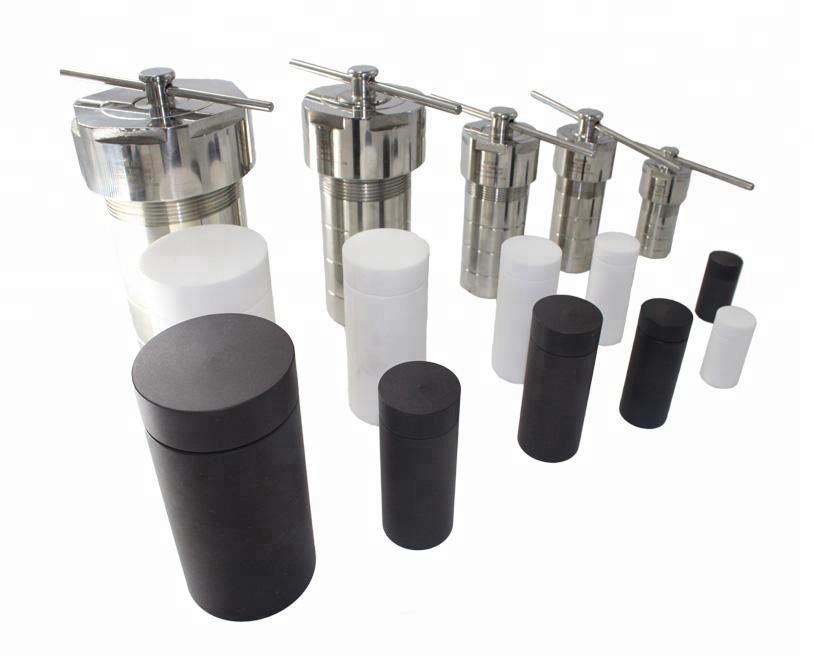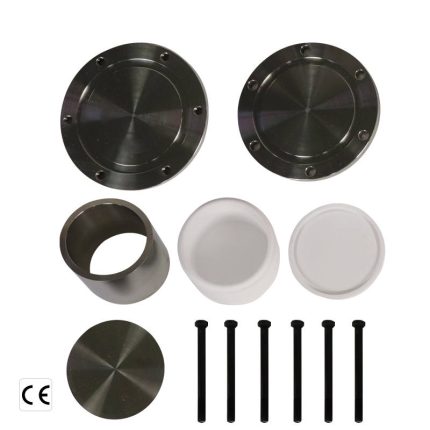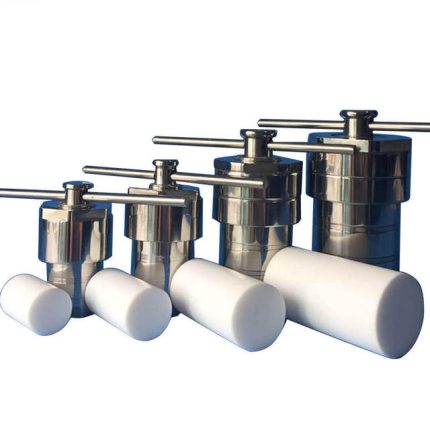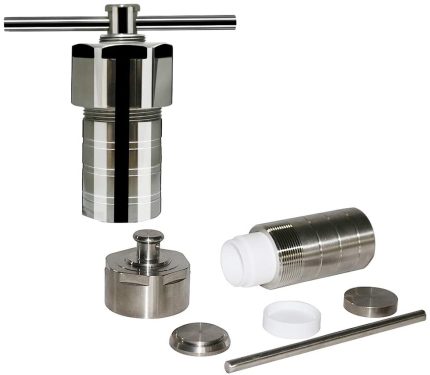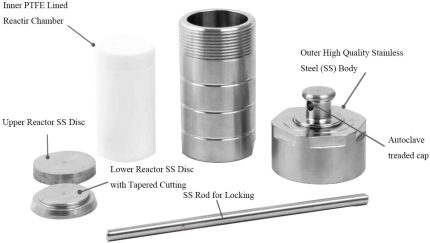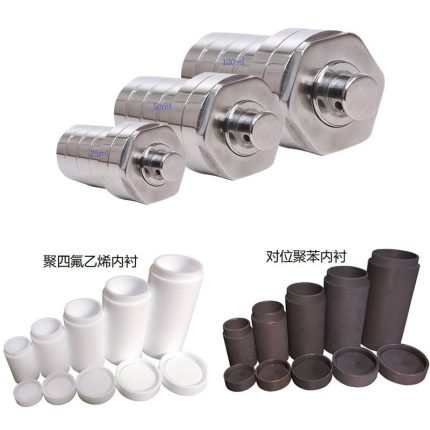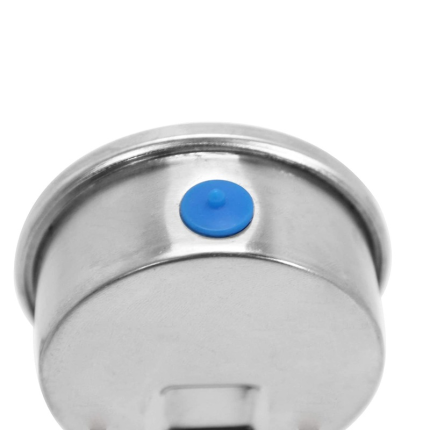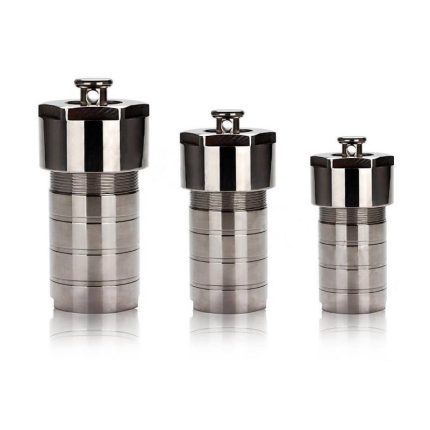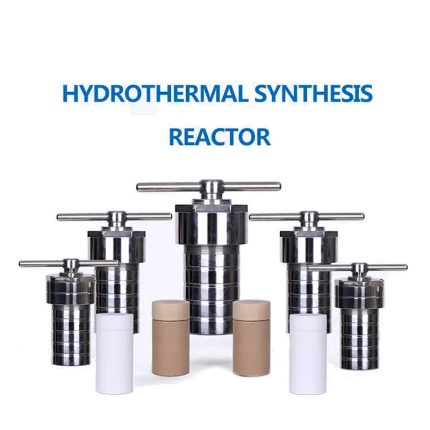High Pressure High Temperature Reactor PTFE Lined Autoclave Hydrothermal Synthetic Digestion Vessels
25mL, 50mL, 100mL, 200mL & 500mL Small Pressure Reactor
A.PTFE lined hydrothermal autoclave (3Mpa, Max.Temperature:220C)
B. PPL lined hydrothermal autoclave (3Mpa, Max. Temperature:280C)
Hydrothermal synthesis reactor is working under certain temperature and pressure conditions to dissolve the material. Mainly for material which doesn’t dissolution, poorly soluble material, or the reaction product of the dissolving substance. By controlling the temperature of the solution errand convection to form a supersaturated state and folding crystal growth. Hydrothermal synthesis reactor is used to the preparation or synthetic compound of nano materials. Also can used to do small synthesis reaction of crystal growth. Hydrothermal synthesis reactor is widely used in college laboratory.
Working Temperature:PTFE≤230℃,Safe Temperature is 200℃; PTFE≤280℃,Safe Temperature is 260℃. Strictly require temperature not to exceed the maximum use temperature.
Working Pressure:The pressure of the actual reactant in the kettle shall not exceed 3Mpa. The pressure generated by material synthesis requires the customer to accurately calculate the pressure generated at the temperature according to the different materials used in the experiment. The experiment must be conducted within the normal allowable range to ensure the safety of the experimenter.
PTFE Lining and PPL Lining:PPL is a kind of synthetic material added to PTFE, and its properties are better than those of PTFE alone. PPL can be used continuously at 260 ℃, with the highest operating temperature 280 ℃-300 ℃, very low friction coefficient, good wear resistance and excellent chemical stability.
Loading Capacity:The amount of solvent added to the reaction depends on different tests, generally 60%~80% of the inner cup capacity. If the reactant produces a large amount of gas, it is recommended to cool overnight and use perchloric acid. Hydrogen peroxide and so on should pay special attention!
Heating Equipment and Safety:Generally, the laboratory uses an oven for heating. The actual temperature control inside the oven should reach ± 2 ℃ to avoid excessive overheating. When the oven starts to heat up, there shall be no personnel in the room to prevent explosion injury! Enter the tank only after it is cooled to room temperature. Necessary safety protection measures shall be taken when taking the tank, such as face protection, hand protection, respiratory protection, etc.
